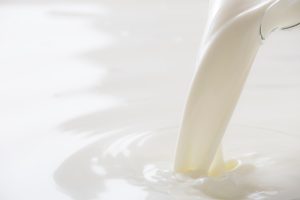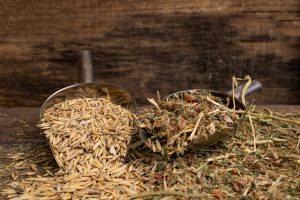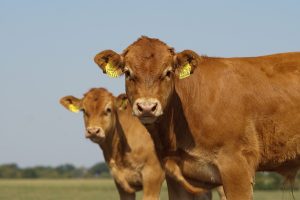Fernando Díaz
Flax is a cool climate crop grown mainly for production of fiber and food. Its seed, linseed, is rich in oil which contains more than 50% of the essential fatty acid alfa-linolenic acid (omega-3). Linolenic acid is converted into eicosapentaenoic acid and docosahexaenoic acid, precursors of eicosanoids such as prostaglandins. Moreover, linseed is one of the richest sources of lignans, a phytoestrogen. Supplementing linseed to dairy cows increases omega-3 acid content in plasma and reproductive tissues, which can affect the development of ovarian follicles and corpus luteum.
French researchers (Meignan et al., 2019) conducted an epidemiological study to quantify the effects of supplementing extruded linseed on reproductive performance of dairy cows. Using a large dataset from the official Milk Recording Scheme in combination with artificial insemination records for 8 years, the investigators evaluated whether feeding a patented commercial extruded linseed product improves reproductive indicators (time to first insemination, the time from calving to conception and the risk of a return to service) in 1096 French dairy herds.
Cows received linseed continuously from calving until 17 days after insemination, and the herds were categorized based on the linseed dose fed as: control (0 g/cow/day; 48.7% of the cows), low- (0-50 g; 3.9%), medium- (50-300 g; 22.7%), high- (300-600 g; 17.5%) or very high-level (600-1500 g; 7.2%). About half of the cows received linseed, and in these cows, average linseed intake was 337 g/day. Previous studies in which supplementation of extruded linseed in commercial farms was evaluated used greater doses (740 – 1745 g/day).
The retrospective observational study included 423,605 inseminations from 158,125 cows and was published in Theriogenology. These were the main findings:
- Cow fertility was not affected by linseed supplementation. The return-to-service rate between 18 and 78 days after service was 48.4 and 49.2% in the control and linseed population, respectively.
- Feeding linseed reduced slightly the time from calving to conception from 110 to 107 days by reducing the time from calving to first insemination from 91 to 90 days. Surprisingly, the effect observed on the time from calving to conception was higher in cows fed the lowest linseed dose (0 – 5 g) than greater doses.
- Milk production increased lineally in cows receiving linseed: +0.00, +0.59, +0.90 and +1.13 kg/day with a low-, medium-, high- and very-high linseed intake, respectively.
In conclusion, under the condition of this study, feeding extruded linseed during early lactation did not affect fertility in dairy cows but improved milk performance.
Reference
Meignan, T., A. Madouasse, F. Beaudeau, J.M. Ariza, C. Lechartier, N. Bareille. 2019. Does feeding extruded linseed to dairy cows improve reproductive performance in dairy herds? An observational study. Theriogenology. 125: 293 – 301.









